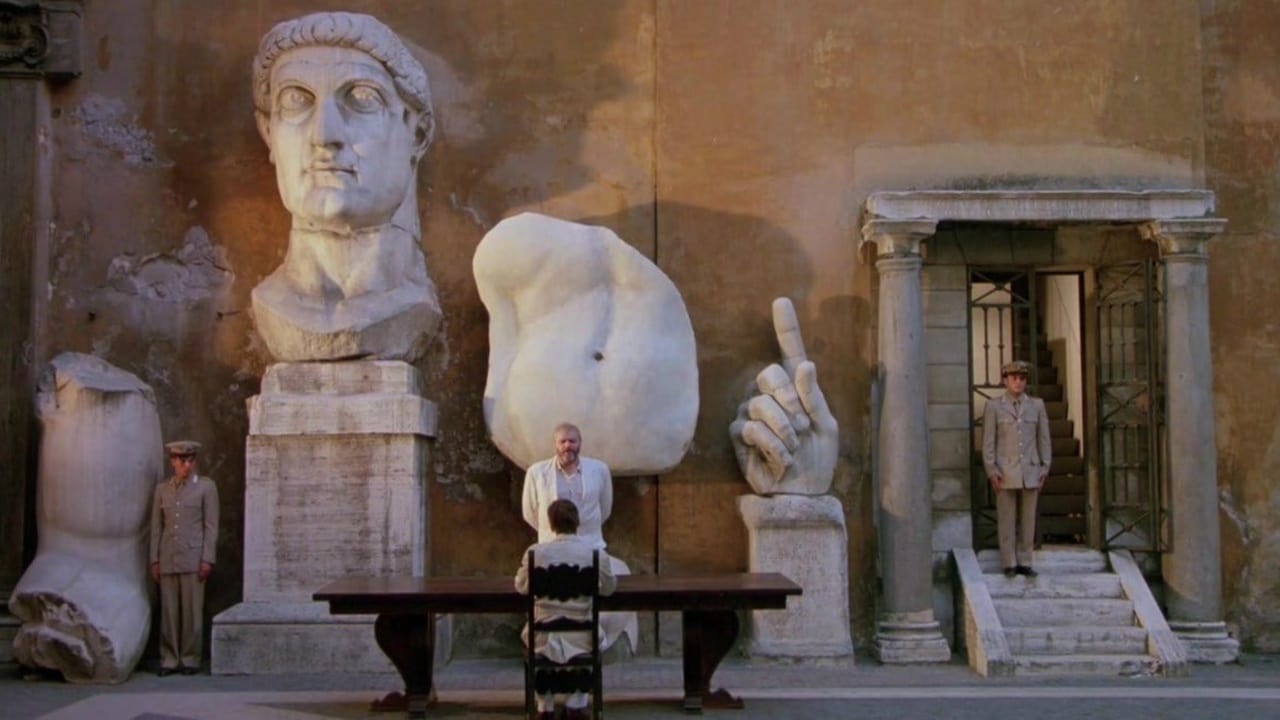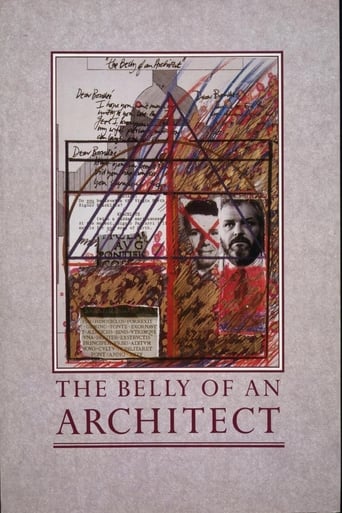



Close shines in drama with strong language, adult themes.
View MoreA film of deceptively outspoken contemporary relevance, this is cinema at its most alert, alarming and alive.
View MoreGreat movie. Not sure what people expected but I found it highly entertaining.
View MoreThe thing I enjoyed most about the film is the fact that it doesn't shy away from being a super-sized-cliche;
View MoreI always know I can turn to Greenaway for nested worlds. He's one of few who can - not always mind, but the few occasions are precious - align the notions of image, how they project outwards to form what we know of reality - an empty field of anxious, random forces tossing us around - and the interior springwell from where these images flow out and which reveals ourselves to be in control of them. The play is usually given to us by some sort of fiction passing as real, or a charade within another, a story within itself, so that we may be directed from the confines of the narrow frame into a broader view that includes it.The idea is especially powerful in the context of architecture, that we use form to project outwards a set of ideals but, having understood ourselves eventually circumscribed by structures that describe us, we can then use them to describe the inner landscape.So indeed, we stroll around one such interior Rome, where earlier decadence or glory, or masks thereof, greeting us from marble balustrades and rows of pillars reflect inside. A city so ornately decorated and cast in stone, as though man would outlast his follies.Into this comes an American architect - the man whose folly is to build things that last - to stage an exhibition for some obscure French architect who died 180 years ago. Italians are not too happy that he hasn't picked one of their own, but they oblige to finance nonetheless.There are two broad ideas that Greenaway is careful to lightly caress, tease out their potential implications, but finally circumnavigate. The film would have been lesser had it settled on either, or is perhaps greater for encompassing both.One is the doubling; the architect begins to imagine himself as his older counterpart, writing letters to him in the form of private confessional; then begins imagining himself as emperor Augustus, trapped in the same ploy of marital infidelity and murder. He replicates these stories around him. So these people overlap and are mirrored with bellies, bellies aching with the toll of creation. At this point you may think it is all going to be another film about the creative person losing himself in the mind, merging life with narrative.The other is, as always with Greenaway, about all this as doubling for the making of the film. It's a film-within device, make no mistake. So the visionary artist is increasingly frustrated by lackeys, ignorant money-men, virulent antagonists scheming to usurp him; energy is wasted in duplicitous dinner parties and idle, but always more or less venomous, chit-chat, until eventually finds himself embittered and alone in his own set.But it is not merely about the price of genius, or a satire of the contemporary civilized arena that it has to bleed into.Look for the scene with his doctor in front of the busts of emperors; each bust a face and story, one decadent and evil, another perhaps famed as wise, but all inadvertently gone. A little further down is a bust without name, it could be anyone's, and whatever story will be inscribed upon it, it's again only destined to join this gallery of fiction. It is important to see these follies, but more important to see the continuity.So it is this acceptance on the part of the architect, the man who builds things not only to last but to be beautiful in time, of the turn of the wheel, decline through rebirth. It is powerful stuff to see; the scene in the police station near the end, where he is simply asked name and age, whether married or not. He is free to go then. He has been jotted down in the ledgers.The final scenes in the exhibition center echo with this casual dismissal of a life lived, a casual but sweet, relieving it would seem, departure after so much grief with nothing to weigh on the shoulders. He attends the exhibition, the work of a lifetime, from the balustrade above, from the vantage point of not being involved anymore. Everything looks like a small ceremony from there. So this is the nested world that matters; not the exhibition, but the creative life on the ego-redemptive journey through life at large, purging itself of itself, after the painful struggle to master the world building pantheons finally submitting to be the mastered world, transient, as it comes into being and goes again.As he goes, new life is born down below - and plays, again and again it would seem, before the colossal marble structures.It is perhaps the ideal Greenaway film; the self-referential tics are all present, the framework ornate, but instead of chaotic it is all mastered into a pillar that supports, unifies vision. The architect - on more levels than one - coming to terms with the architecture of a transient life.
View MoreWelcome to Greenaway cinema. Having seen only his 'hit' The Cook the Thief His Wife & Her Lover(1989) and this, I cannot say much for the sum of his films. I will simply try to find and watch more film of his. His comments and quotes here in IMDb are impressive as well. On to the film: Shot in Rome, it will thrill people with interest on architecture both visually, but thematically as well, well at least at some points. The musical score is stunning. It suits the theme and climax that Greenaway masterfully builds. As with The Cook the Thief His Wife & Her Lover, it is not various separate songs. All the soundtrack songs together form a thriumph of visual and audio art, suggesting my point about the importance of film soundtracks for an effective impact on viewer. This is a sad story, but it features some light points where joy and lust for life is celebrated - at least for my eyes and ears.Those who criticise Greenaway for attempting only to shock the viewers have simply lost the point. Anyway. The Belly of an architect is no violent film, so it is highly recommended to those interested in films, maybe a bit 'arty', but with heart .
View MoreThis is possibly the most painful and yet bland love-drama I've seen. It's also a film about clashes between cultures. Why? you ask. (SPOILERS)Well, in the beginning, when we see the happy couple making love on the train, everything is so relaxed and comfortable. Then they arrive in Rome, Italy. And ever so slowly, the Italian sun-beaten culture with a whole different set of values, start creeping in.At first, both "Senior Cracklite" and his wife are met with great respect as if they were both filmstars or something. And then they start interacting with Italian people, eating late, beginning to get sluggish by the everyday heat, being hit by the ever-present "yada-yada" of the Italian language (it's a beautiful language, but still "yada-yada"), etc. And then Louisa meets the ever-smiling and charming Italian men, who takes her by storm. Mr. Cracklite is so immersed in his job that it's hard not to see where this is going.And so, it goes the way we all fear. And I could really feel a strange recognition in this. Not that I've been in Italy and have experienced this first-hand, but I've traveled to other countries in southern Europe, and seen/listened to this almost invisible world of "alcoholic fumes", generated by a culture raised on wine instead of milk, siestas instead of lunch-breaks, the double standard of the unmarried woman being protected to the death and the brutal male shovinistic tradition of 'hitting on' married women instead.And Mr. Cracklite is a sitting duck for this kind of 'ambush' on his relationship with his wife. Just as she is. Because they are the products of a more western view of peoples conduct. Not to say that infidelity is any less a product of our culture as well. I myself is from Sweden, and I recognize more in the way that the Cracklite's reactions than the Italian's. Also, the absolutely wonderful photo stresses this love-crisis even more. The immaculate Italian architecture, reeking of history and centuries past, the great heritage from thousands of generations of poets, musicians, statesmen, the whole civilized culture of the Romans only accentuates the feelings of estrangement between Mr. Cracklite and his wife, and between his visit to this 'alien culture' and his own distant home.And that is what ends his part in this story. But not his ex-wife's.Oh... Those women and that love. Never absolutely trustworthy. I give this film an 8 out of 10.Dracopticon out.
View MoreBrian, except for the belly part, seemed to have exactly the opposite type of personality and physiognomy to play the central character. He had a big project to complete (beautiful architecture photography, by the way). His marriage and body are falling apart and he barely cracks a wrinkle.This may have been part of Greenaway's strategy of casting characters against obvious type (or maybe Brian was the largest major actor available). But this time it comes off as neither comedy or tragedy.Don't let this lapse by Greenaway turn you off to his other weirdness.
View More